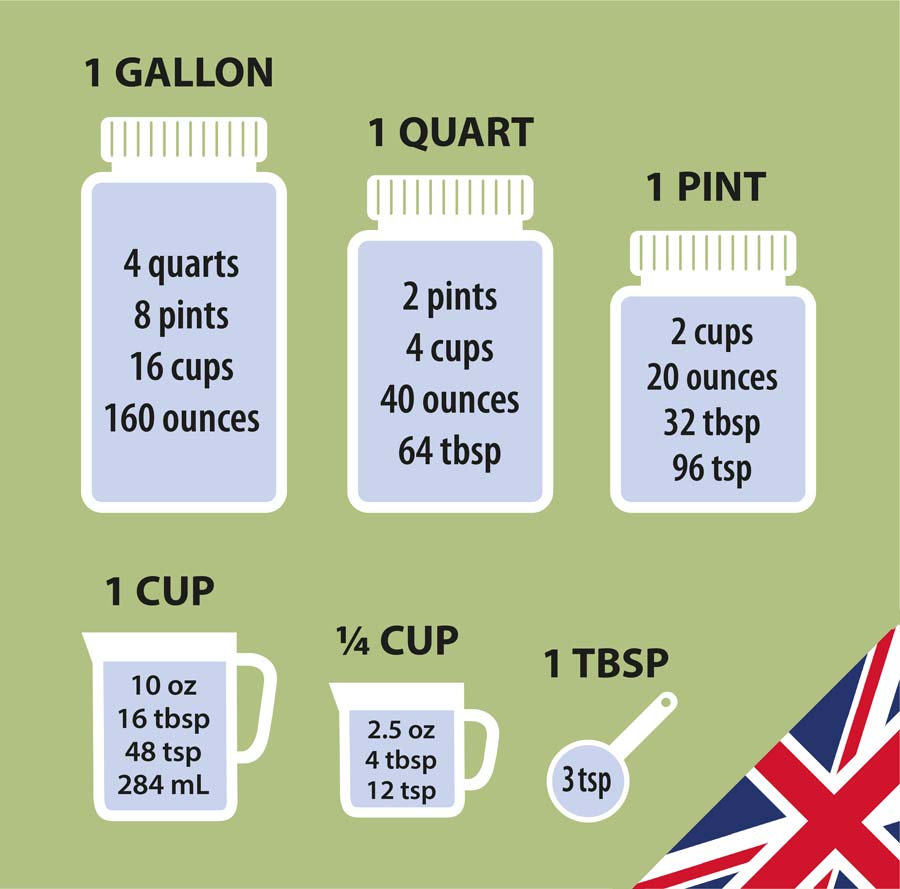Please be aware that I base my measurements off of what I have in my kitchen. The items that you have may vary from mine but weights and measures should never change. Dry volume ALWAYS differs from a liquid volume. For example, if you are trying to use a measuring cup to measure out fresh basil, one cup of basil (8 ounces) is not the same as 8 actual ounces of fresh basil. For this reason, I will always try to avoid using such an arbitrary measurement.
Quantities: how many?
Most ingredients are measured by quantity or volume. Quantity is reasonably self-explanatory: if it says "One onion, finely diced" then that means use one onion.
But... onions, potatoes, carrots, etc., come in all sizes from tiny to humongous. As a good rule of thumb, I always try to give actual weight measurements rather than one of this or two of that. I have a kitchen scale and I try to use it whenever possible. Doing so makes my recipes more precise and easier to follow.
Cooking conversion table (U.S.)
MEASURE
ABBREV
SIZE
EQUIVALENT
1 Millileter
ml.
1 ml
1 cc of water
1 Teaspoontsp.5 ml-1 Tablespoontbsp.15 ml3 tsp1 Fluid Ouncefl oz.30 ml2 tbsp1 Cupcup237 ml8 fl oz1 Pint (Imperial)Imp pt.568 ml2 cups1 Pint (US)US pt.473 ml2 cups1 Quart (Imperial)Imp qt.1137 ml2 Imp pts1 Quart (US)US qt.946 ml2 US pts1 LiterL.1000 ml1.8 IMP pts / 2.1 US pts1 Gramgr.1 grWeight of 1 cc water1 Ounceoz.28 gr-1 Etto-100 gr3 oz1 Poundlb.454 gr16 oz1 Kilogramkg.1000 gr2.2 lb Weight of 1 liter of water Top tips for weight and measures
Stay with the original recipe. It saves a lot of conversion time and bothers when you can work with the original scales and quantities listed. This means...Invest in good measuring equipment. Buy measuring jugs, cups and weighing scales that are clear and accurate. Also, choose measuring and weighing equipment that cover as many different types of measurement as possible. This will save you much time and worry.Use the appropriate scale. When speed is important, go with the largest practical measurement scale (pints instead of cups, for example). But where accuracy and precision are important, use the smallest practical measurement (e.g. four tablespoons instead of a quarter cup).Less is more. Not so much a measuring tip as a culinary one; a little goes a long way, particularly with herbs, spices, and salt. Remember, you can always add more - but you can never take it out.Be consistent. Try not to mix different types of measurement within a single recipe and use the same equipment throughout (a single type of measuring spoons, for example). It's all a question of balance. When it comes to flavor, the absolute quantities don't matter so much as the relative proportions of ingredients.
U.S. Cooking Conversions

British Cooking Conversions
 Read full article
Read full article 
